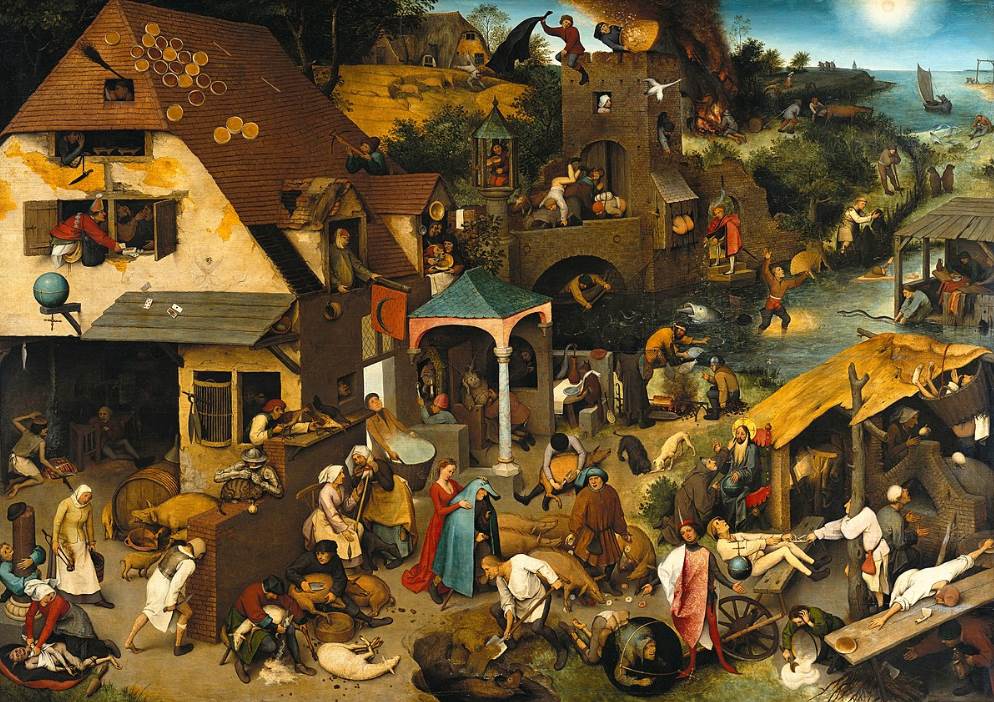The northern Renaissance in the 16th century wasn’t blessed with copious amounts of talented artists emerging.
One man sticks out and became one of the most influential Renaissance artists in history, producing several world-famous paintings.
Pieter Bruegel the Elder (1525-1569) was born in or around the city of Breda in the modern-day Netherlands. He settled in Antwerp in the early 1550s and traveled to Italy to learn from Italian artists.
Many of his most famous works depict peasants, often including the amazing landscape of the Low Countries. While these paintings might seem ordinary, many have a deeper meaning as well.
In this article, you’ll discover some of the most famous Pieter Bruegel the Elder paintings, Renaissance masterpieces painted by a remarkable talent.
1. Children’s Games
- Date created: 1560
- Dimensions: 118 × 161 centimeters (46 × 63 inches)
- Location: Kunsthistorisches Museum, Vienna, Austria
Children’s Games is one of the Pieter Bruegel the Elder paintings that appear to be depicting a catalog of common medieval games played by children. It has, however, a deeper meaning as Bruegel intended to depict the foolishness of the seriousness in which both children and adults go about their activities.
This notion is stressed by the fact that children appear all over the place, including in the civic building that dominates the square and central part of the composition. The painting was acquired by Archduke Ernest of Austria in 1594 and resides in the Kunsthistorisches Museum in Vienna today.

2. The Peasant Wedding
- Date created: 1567
- Dimensions: 114 × 164 centimeters (45 × 65 inches)
- Location: Kunsthistorisches Museum, Vienna, Austria
The Peasant Wedding is one of the multiple paintings by the artist that depicts peasants. He enjoyed painting them doing ordinary activities and in this case, the celebration of a wedding. His multiple peasant-related paintings earned him the nickname “Peasant-Bruegel.”
Whether or not he was actually from a peasant background remains uncertain. He did show great general knowledge about historical subjects in his works, but he needed other people to add Latin text to them. This is the main reason why art historians are still divided on the matter.
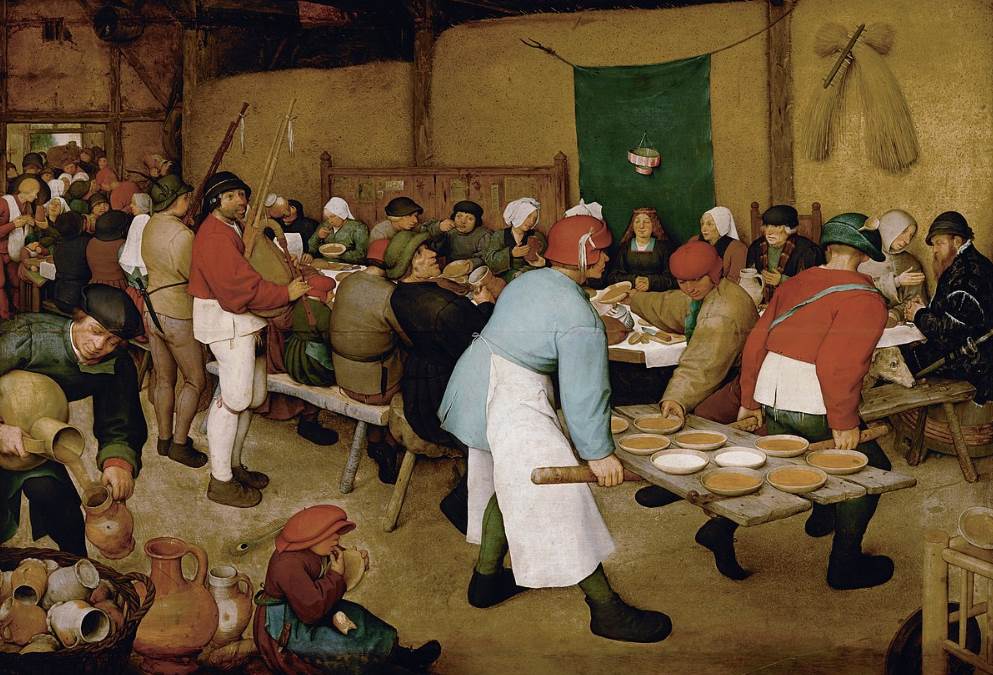
3. The Hunters in the Snow
- Date created: 1565
- Dimensions: 117 × 162 centimeters (46 × 63.25 inches)
- Location: Kunsthistorisches Museum, Vienna, Austria
The Hunters in the Snow is part of a series of paintings that depict various periods in the year. This particular work depicts the winter months of December and January. 5 other paintings survived depicting 2 other months of the year.
There was a sixth painting that was never completed by Bruegel but of which a preparatory drawing exists. Several paintings depicting the missing months in Spring were painted based on this drawing. The Hunters in the Snow became one of the most influential snowscapes of the 16th century.
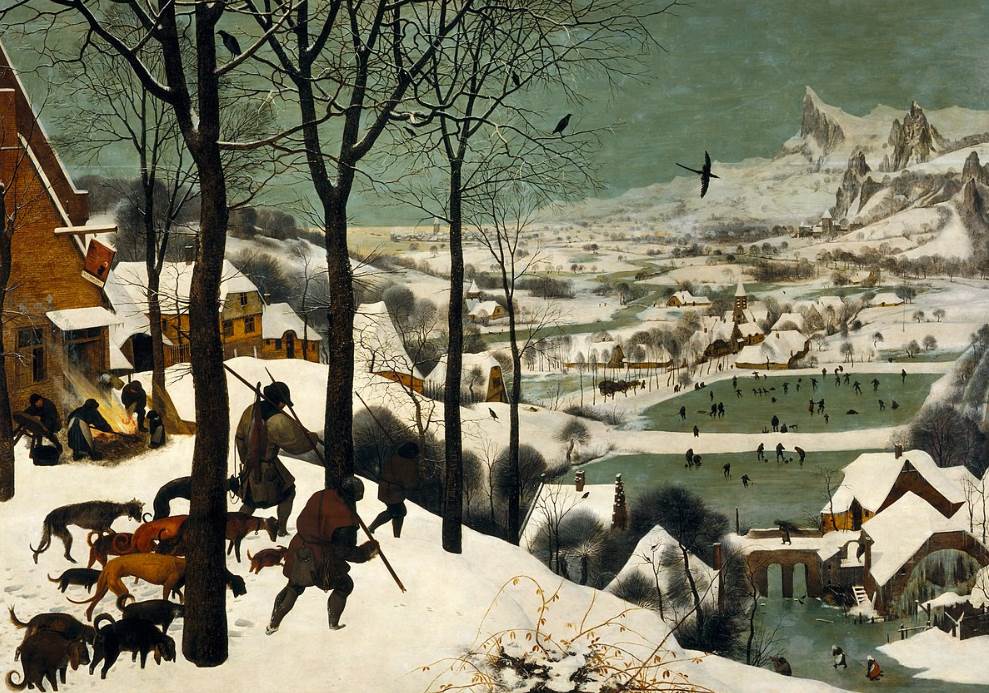
4. The Harvesters
- Date created: 1565
- Dimensions: 119 × 162 centimeters (46.87 × 63.25 inches)
- Location: MET Museum, New York City, United States
The Harvesters is another famous Bruegel painting in this series that depicts the months of Augustus and September. As you expected, these are the months that the harvest takes place in the Low Countries and various peasants can be seen either resting or working.
Another important note about these paintings is that they didn’t include any religious motive, something that was very uncommon for such magnificent landscapes at the time. This particular painting has been part of the collection of the Metropolitan Museum of Art in New York City since 1919.
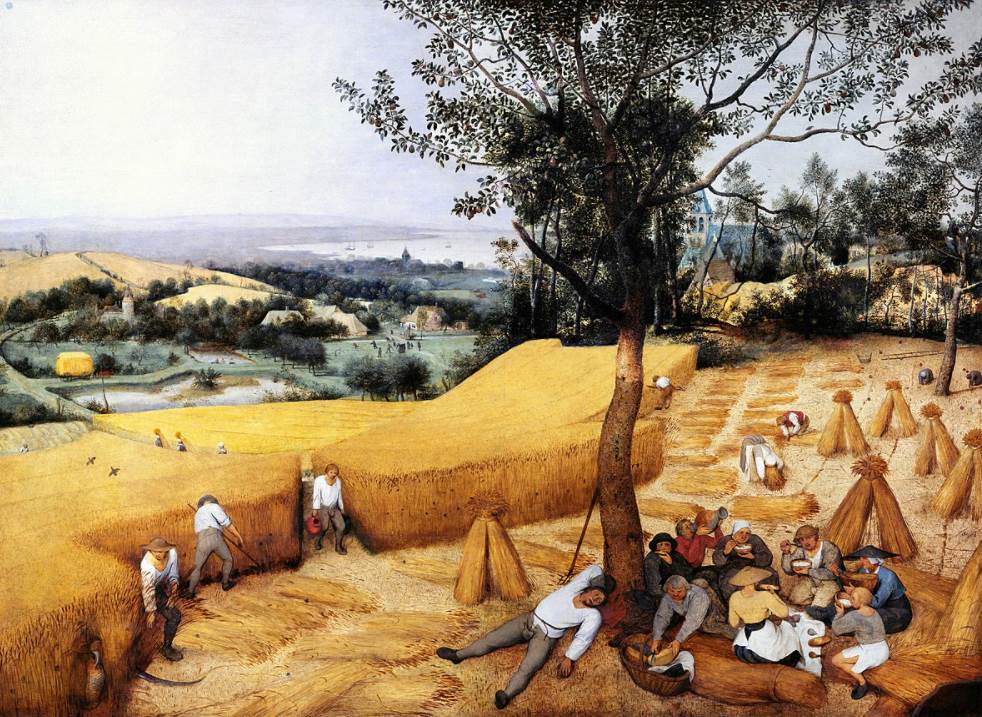
5. The Blind Leading the Blind
- Date created: 1568
- Dimensions: 86 × 154 centimeters (34 × 61 inches)
- Location: Museo di Capodimonte, Naples, Italy
The Blind Leading the Blind is a painting that was produced using a distemper on a linen canvas. It depicts a Biblical parable mentioned in the Gospel of Matthew 15:14 with the same name. It’s a metaphor for describing people without knowledge advising others.
The painting is a remarkable work in Bruegel’s oeuvre because it shows Bruegel’s general knowledge about various conditions. Every figure in this work has a different eye affliction. They hold their heads upward so they can better use their other sense to move around.
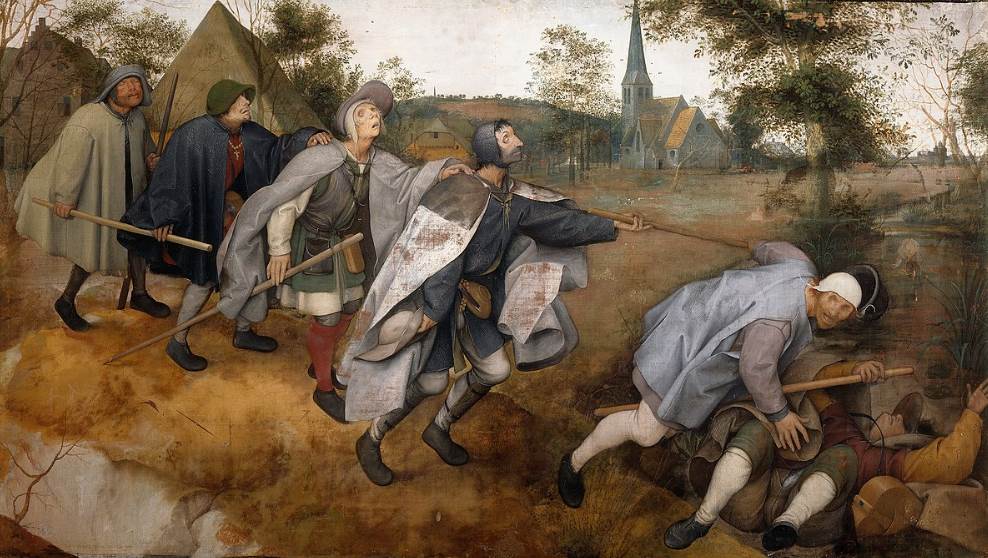
6. The Triumph of Death
- Date created: 1562
- Dimensions: 117 × 162 centimeters (46 × 63.8 inches)
- Location: Prado Museum, Madrid, Spain
The Triumph of Death is one of the most intriguing of all Bruegel’s paintings. It depicts a desolate landscape that has been invaded and destroyed by an army of skeletons. There are fires everywhere and shipwrecks can be seen in the distance as well.
The paint was based on two different types of paintings. One was common in northern woodcuts called “Dance of Death” in which skeletons can be seen dancing. The other is the Italian version of the Triumph of Death which was often included in monumental frescoes.
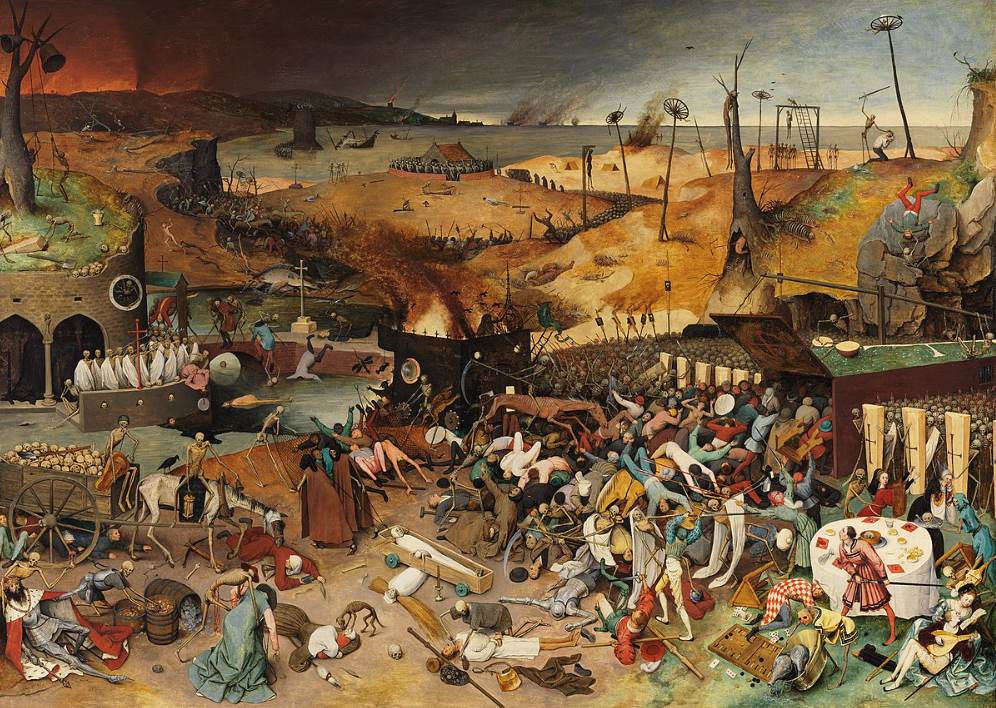
7. The Tower of Babel
- Date created: 1563
- Dimensions: 114 × 155 centimeters (45 × 61 inches)
- Location: Kunsthistorisches Museum, Vienna, Austria
The Tower of Babel is the name of three artworks produced by Bruegel. One of which dates back to his period in Rome has been lost. The other two are oil on wood panel paintings that are on display at the Kunsthistorisches Museum in Vienna and Museum Boijmans Van Beuningen in Rotterdam.
The version in Vienna is significantly larger than the first and provides an accurate depiction of the construction of the Biblical Tower of Babel. This mythical tower was mentioned in the Book of Genesis in the Bible and was intended to unify the human race and serve as a mark of their accomplishments.

8. Massacre of the Innocents
- Date created: 1565-1567
- Dimensions: 109.2 x 158.1 centimeters (42.9 x 62.2 inches)
- Location: Royal Collection at Windsor Castle, Windsor, United Kingdom
Massacre of the Innocents is a painting that depicts the Biblical story of Herod the Great commanding to kill all male infants below the age of 2 in the region of Bethlehem. Bruegel’s version is a remarkable work of art because he turned it into a winter scene.
There are several versions of this painting, many of which are believed to have been completed by Pieter’s son known as Pieter Brueghel the Younger. The only authentic work by the hand of the father is believed to be part of the Royal Collection at Windsor Castle.

9. The Procession to Calvary
- Date created: 1564
- Dimensions: 124 × 170 centimeters (49 × 67 inches)
- Location: Kunsthistorisches Museum, Vienna, Austria
The Procession to Calvary depicts the story of Jesus Christ carrying his cross before his execution. The scene is set in a huge landscape that is full of figures, making it one of the most fascinating versions of this popular subject in art history.
Bruegel focused on details and therefore didn’t produce monumental works of art. This painting is an exception and is the second-largest painting that he ever completed. It was completed for a patron in Antwerp named Niclaes Jonghelinck, the same man who commissioned the months of the year.
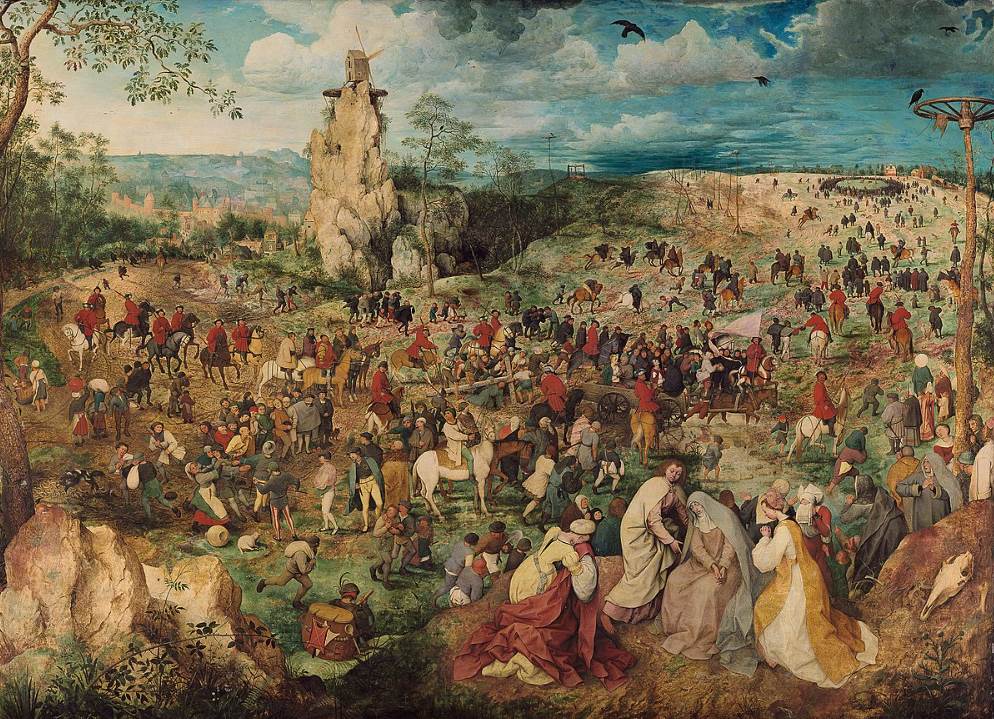
10. Netherlandish Proverbs
- Date created: 1559
- Dimensions: 117 × 163 centimeters (46 × 64 inches)
- Location: Gemäldegalerie, Dresden, Germany
Netherlandish Proverbs is a painting that is also known by several other names, including “Flemish Proverbs,” “The Blue Cloak,” and “The Topsy Turvy World.” As the name suggests, it features numerous allegorical depictions of common Flemish proverbs.
The original titles of the work, including “The Topsy Turvy World,” emphasize the fact that the artist wanted to depict the foolishness of humans rather than just a catalog of proverbs. This is in line with the deeper meaning behind his famous painting Children’s Games.
